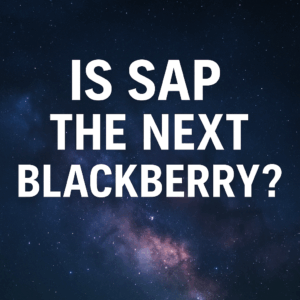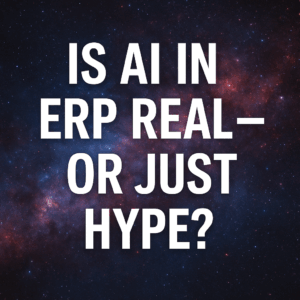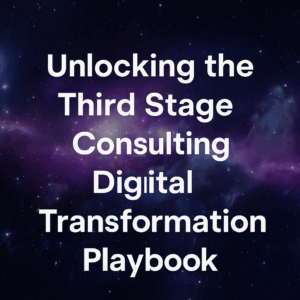E-commerce systems have gained increasing popularity in the present climate. This importance is growing, owing to the recent transformation occurring at several retailers, distribution, and even some B2B organizations, which are relying on this technology to provide a better customer experience. That said, what are the top 10 e-commerce systems in the market that should be considered? Here is everything you need to know.
Before we dive in, it is important to understand the criteria used to rank these systems. As an independent firm, we are not affiliated with any of the software vendors we are about to introduce. Moreover, the evaluation criteria we use are based on several factors, such as market share adoption, cost, overall value, functionality, ease of integration to other systems, and our overall client experience. I want to be very clear – absolutely no vendor, partner, or third party influenced this list in any way.
Without further ado, let us dive into the top 10 list.
Table of Contents
Toggle10- Weebly
Number 10 on our list is a product called Weebly. It is suitable for small / mid-sized retailers and distribution organizations. This relatively low-cost system is a good entry point e-commerce solution. Among its biggest strengths, other than the cost, is the strong visual appeal in its functionality and how the processes are laid out, in addition to the strong email integration. Yet, as with all of the top 10 systems, it has its weaknesses.
Compared to some other top 10 systems, search engine optimization capabilities are relatively weak. Weebly may not be the best option if you value SEO and desire to use it as exposure means. Another consideration is its weak Amazon integration, it may not be the best fit for Amazon sellers and Amazon stores, but it still does the job.
Finally, while it is low cost, Weebly charges transaction fees on some lower-cost plans. Therefore, utilizing Weebly may lead to an unanticipated escalated cost. This is enough to land Weebly at number 10 on our list.
9- PrestaShop
Number 9 on our list is a product called PrestaShop. It is a free open-source system, and that makes it unique. The beauty of that is not only the tailoring flexibility but also various third-party apps that can be tied to it. If flexibility and openness are your criteria, PrestaShop can be a great fit. The other strength that landed PrestaShop at number 9 is its very strong SEO capabilities. Therefore, PrestaShop can be a great solution for internet marketers.
The downsides of using PrestaShop are the slow load time that makes the performance somewhat questionable and disadvantageous compared to other systems. Apps can add up leading to increased overall costs, as well as third-party integration limitations to other systems. Therefore, if you plan to tie your e-commerce solution into other systems, this is not the best integration system that you might need to run your entire enterprise on. With this, PrestaShop is positioned at number 9 on our list.
8-Volusion
At number 8 is a product called Volusion. This is a great e-commerce solution, its simplicity and ease of use fit perfectly small, mid-sized, and less complex organizations. The reason for that is the reasonable and predictable pricing, compared to other systems in the marketplace with hidden costs related to hidden escalators. Moreover, this product offers strong onboarding support, which facilitates the adoption and familiarization with the product, while other solutions provide more of a do-it-yourself type of approach.
The downsides of Volusion reside in its user interface, look, and feel which appear somewhat dated compared to other products.. In addition, it has been known to not be as responsive and fast as some other systems. Moreover, if you are a retailer and would like to cross-sell or upsell, Volusion is ineffective in providing recommendations and automate some of those capabilities. Nevertheless, with its pros and cons, Volusion is number 8 on our list.

7-Magento
Number 7 on our list is Magento, one of the most commonly known systems in the marketplace. It is built for larger organizations, such as multi-store and more complex organizations, especially dealing with high transaction volumes. The reason it is suitable for larger organizations is because of the transaction volume that it can handle. For example, it can support up to 500,000 different products, and up to 80,000 orders per hour.
Therefore, if you perform high transactions, have a broad skew base or broad product line, Magento is a system that can help scale and provide suitable capabilities. It also features strong content management; thus, it helps to provide user manuals or other complimentary sales collateral, or marketing collateral included with e-commerce capability.
Finally, it offers customizable security permissions, thereby, large organizations with more people operating e-commerce processes can divvy up those roles and responsibilities in the security better than some other systems.
Magento’s downsides begin with the typically higher cost. This somewhat makes sense because larger organizations require more capabilities, which justifies the cost. Moreover, due to its complexity, it has a steep learning curve. You would need an internal IT capability to be able to support the product and manage its long term. Despite the large and complex transaction volumes that it can handle, it can still provide some processing lag time. This is enough to place Magento at number 7 on our list.
6-Squarespace
Number 6 on our top 10 list goes to Squarespace, another pretty well-known e-commerce solution, especially among small and mid-sized organizations. It is a great fit for small retailers due to its easiness in setting up, unlike Magento and some other systems. They also have a strong visual appeal and user interface. Being easy to learn, use, and maintain, it does not require a lot of sophisticated IT support in the long term.
Squarespace’s downsides include the lack of e-commerce integration. Tying it to, for example, warehouses or financials in a large organization can be difficult. It also does not allow for payment gateways, so if it is important to your e-commerce processes, you want to consider that. Moreover, unlike other providers, Squarespace does not provide phone support. It may not be the high-touch vendor that provides a product, solutions, and helps via their support – but the product is easy to learn, thus the trade-off.
5-3DCart
Our number 5 is 3DCart. Similar to Magento, it is built for more scalable organizations. It is highly customizable, allowing selling via multiple channels, which many retailers and e-commerce providers strive for. It is also reliable in terms of transaction volume and processing speed.
3DCart’s downside includes some of its outdated templates, its non-user-friendly customer experience, and weak phone support compared to other systems. Customers have also expressed concern or challenges during the upgrade process. With these aspects considered, 3DCart lands at number 5.

4-WooCommerce
Number 4 goes to WooCommerce, another highly adopted e-commerce provider. It takes this position due to various reasons. First, it is extremely strong in SEO capability, which fits internet marketing that requires to be found via the internet search engines. It also offers one-click purchasing, which is not offered by all our top 10. This feature is very important to increase the conversion rate and ensure meeting the sale with people on your website. Finally, thanks to third-party providers, you are not dependent on or limited to one service provider.
WooCommerce’s first downside is its difficulty to host. We had clients and industries who expressed concern over that, as it can be costly. From a technical perspective, it can be tough to troubleshoot, making the learning and maintenance not the easiest. The other downside is that it requires a lot of extensions if you are looking for the full capabilities of the product and you intend to deploy them. The required extensions can add to the complexity of the overall implementation.
3-Shopify
Number 3 is earned by Shopify, perhaps the best-known system on our top 10 list. Being suitable for different situations, it is used by different size organizations. Amidst the marketplace systems, it has the fastest load and response time, it is an extremely responsive system, and notably scalable. It increases your conversion rates and customer experience thanks to the one-click selling simplicity feature. It supports over a hundred payment processors worldwide, an advantage when using different types of payment processors. Finally, its customer support is strong.

From a downside perspective, Shopify’s is not as strong at SEO and content marketing as some other products. Therefore, it would face limitations in providing complementary marketing and sales types of collateral to support the actual product listings and the overall customer experience.
In addition, the checkout feature and capabilities are not customizable; hence, it will pose complications if it does not fit the organization’s intended components. Finally, the product’s advanced features are synonym with increased overall cost.
2-Wix
Number 2 on our list is Wix, which is another solution used by several small and mid-size organizations. This product’s strengths are its usage simplicity and variety of free themes. Not only it is simple to set up compared to other systems, the implemented themes help providing a quick setup. Moreover, it includes marketing automation permitting and workflows within your marketing processes, which is pretty unique compared to some of the others in the top 10 list.
Not only it is an e-commerce provider, Wix provides marketing capabilities not offered by others. Some downsides are that it does not have strong SEO capabilities as other providers, it does not integrate as well with Amazon as some other systems, and it has weak upselling capabilities. If you are trying to grow your business by upselling and offering alternatives to your customers to get them to spend more, this is not the best provider. Still, Wix is number 2 on our list.
1-Big Commerce
Finally, not the best-known product, however, consider all the criteria we looked at, BigCommerce is number 1 on our list thanks to its flexibility to customize and adapt the product to fit your customer experience needs. It’s scalable as you grow as an organization will permit more transactional volume and scale up to meet the growth. It is a particularly good product in enabling a better omnichannel experience thanks to its strength in multi-channel selling. It has a very strong SEO performance.
Some of BigCommerce’s downsides are the missing one-click selling capability sought by organizations to increase the conversion rate. It also has inconsistent loading speeds rendering the response time slower. In higher volume, stores tend to pay more, and the transactional volumes and costs that go along with, tend to escalate the cost over time. That can be somewhat cost-prohibitive for some organizations. Despite these downsides, BigCommerce is number one on our list of top 10 e-commerce providers.
This top 10 list is meant to provide a general starting point. Depending on your organization’s need, size, complexity, and what you are trying to accomplish, the arrangement of these top 10 might shuffle up.
For more related information, I encourage you to check out our 2021 Digital Transformation Report, which is an annual report that provides best practices to make your digital transformation more successful, it also features details and similar software reviews.
I hope you found this information useful and if you have questions regarding e-commerce systems, please don’t hesitate to reach out to me directly. I am happy to be an informal sounding board as you move through your digital transformation journey.






